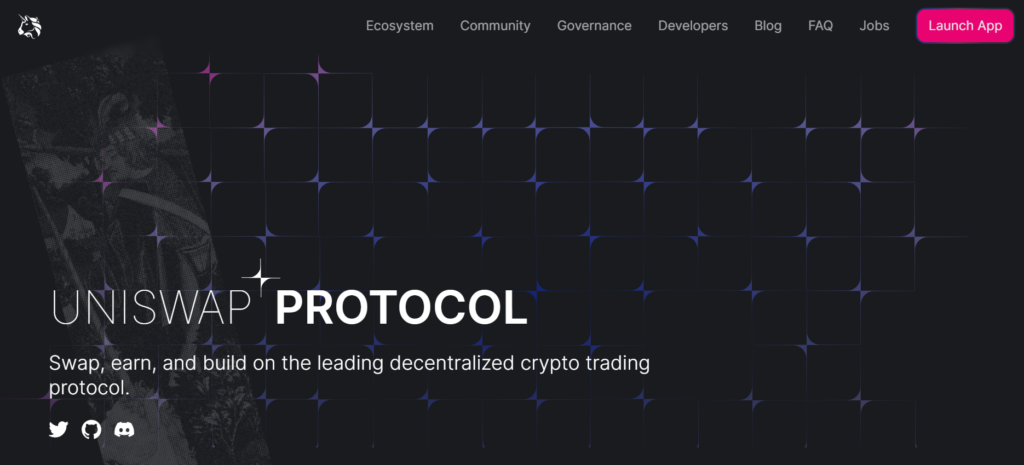Automated Market Makers (AMMs) have revolutionized the crypto trading landscape, providing a decentralized and efficient alternative to traditional market-making. This article delves into the intricacies of AMMs, their history, how they work, and their significance in the crypto world.
Table of Contents
History and Evolution of AMMs
The Birth of AMMs
AMMs emerged as a novel solution to the liquidity and efficiency issues plaguing decentralized exchanges. They replaced the order book model with a mathematical formula to determine the price of assets.
Evolution and Growth of AMMs
The AMM model has seen exponential growth in the crypto space, with platforms like Uniswap and Balancer leading the charge. The total value locked in AMMs has skyrocketed, indicating their increasing popularity.
Traditional Market Makers vs. AMMs
| Feature | Traditional Market Makers | Automated Market Makers (AMMs) | Traditional Crypto Exchanges |
|---|---|---|---|
| Centralization | Centralized, often operated by brokerages or banks | Decentralized, operated by Smart Contracts on a blockchain | Centralized, operated by a specific company |
| Accessibility | Exclusive, requires significant capital and access to sophisticated trading systems | Inclusive, anyone can become a liquidity provider | Inclusive, anyone can register and start trading |
| Price Determination | Prices are set by the market maker based on supply and demand | Prices are set by a mathematical formula based on the ratio of tokens in the liquidity pool | Prices are determined by an order book based on user’s buy and sell orders |
| Trading Hours | Often limited to specific trading hours | Operate 24/7, allowing for constant trading | Operate 24/7, allowing for constant trading |
| Liquidity Provision | Provided by the market maker | Provided by liquidity providers who deposit tokens into the pool | Provided by users who place buy and sell orders |
| Automation | Requires manual adjustment of prices | Prices are automatically adjusted by the smart contract | Prices are automatically matched by the exchange’s matching engine |
| Transparency | Prices and trades are often not fully transparent | All trades and prices are fully transparent and can be verified on the blockchain | Trades are transparent, but order book depth and other details may not be fully transparent |
| Risk of Manipulation | Potential for price manipulation by the market maker | Reduced risk of manipulation due to decentralization and transparency | Potential for price manipulation, especially on low-liquidity pairs |
| Custody of Funds | Funds are held by the brokerage or bank | Funds are locked in a smart contract on the blockchain | Funds are held by the exchange |
Market makers have been a fundamental part of financial markets for many years. In traditional finance, a market maker is an entity, often a brokerage or bank, that quotes both a buy and a sell price for a financial instrument or commodity, hoping to make a profit on the bid-offer spread. They provide liquidity to the market by being ready to buy or sell at any time, which facilitates trading and ensures market efficiency.
However, this traditional market-making model has some limitations. It’s centralized, meaning it relies on specific entities to provide liquidity. It’s also exclusive, as becoming a market maker often requires significant capital and access to sophisticated trading systems.
Enter Automated Market Makers (AMMs). AMMs are a type of decentralized exchange (DEX) protocol that allows digital assets to be traded automatically. They replace the traditional order book with a liquidity pool, a smart contract that holds pairs of tokens. The price of these tokens is determined by a mathematical formula based on the ratio of the tokens in the pool.
This model has several advantages over traditional market making. First, it’s decentralized, meaning it doesn’t rely on specific entities to provide liquidity. Instead, anyone can become a liquidity provider by depositing tokens into the pool. This democratizes the market-making process and opens up opportunities for a wider range of participants.
Second, it’s automated. The smart contract automatically adjusts the price of the tokens based on supply and demand, ensuring constant liquidity and market efficiency.
How AMMs Work

The workings of Automated Market Makers (AMMs) might seem complex at first glance, but they can be broken down into a few key components. Let’s delve into the AMM model, the role of liquidity providers, and the concept of liquidity pools.
The AMM Model Explained
At the core of an AMM is a smart contract, a self-executing contract with the terms of the agreement directly written into code. This smart contract holds pairs of tokens in a liquidity pool. Users can trade against this pool, swapping one token for another.
The price of these tokens is determined by a mathematical formula, most commonly the constant product formula, which ensures that the product of the quantities of the two tokens remains constant. This formula is x*y=k, where x and y are the quantities of the two tokens in the pool, and k is a constant value.
When a user makes a trade, they add to one side of the equation and take from the other, which changes the price of the tokens to maintain the balance (k). This automatic adjustment of price based on supply and demand is a defining feature of AMMs.
Role of Liquidity Providers
Liquidity providers are crucial players in the AMM ecosystem. They deposit an equal value of two tokens into the liquidity pool. For example, if a liquidity provider wanted to contribute to a ETH/DAI pool, they would need to deposit an equal value of both ETH and DAI.
In return for providing liquidity, they receive liquidity tokens, which represent their share of the pool. These tokens can be used to reclaim their share of the pool, plus a portion of the trading fees. The fees serve as an incentive for liquidity providers, as they can earn passive income on their holdings.
However, liquidity providers also face risks, such as impermanent loss. This occurs when the price of the tokens in the pool changes compared to when they were deposited, leading to less of the more valuable token in the pool.
The Concept of Liquidity Pools
Liquidity pools are the backbone of AMMs. They are pools of tokens locked in a smart contract. They provide the liquidity needed for trades to occur. Each trade that occurs within a pool comes with a fee, which is then distributed to liquidity providers according to their share of the pool.
In summary, AMMs work by using liquidity pools to facilitate trades directly on the blockchain. They replace the traditional order book model with a system that’s open to anyone, providing a decentralized and efficient trading experience.
Popular Automated Market Makers Platforms

| Platform | Unique Features |
|---|---|
| Uniswap | Pioneered the AMM model, simple and user-friendly |
| Sushiswap | Fork of Uniswap with added features like yield farming |
| Balancer | Allows for multiple tokens in a pool with different weights |
The crypto world has seen the emergence of several AMM platforms, each with its unique features and offerings. Here, we delve into three of the most popular ones: Uniswap, Sushiswap, and Balancer.
Uniswap: The Pioneer of AMMs
Uniswap is often credited as the pioneer of the AMM model. Launched in 2018, it introduced a simple yet powerful idea: allow two tokens to be exchanged on-chain using a formula that automatically sets the price based on the ratio of the two tokens in a liquidity pool.
Uniswap’s user-friendly interface and permissionless trading have made it a favorite among crypto enthusiasts. It allows anyone to swap ERC-20 tokens directly from their wallets, and anyone can become a liquidity provider and earn fees from trades.
Sushiswap: The Evolution of Uniswap
Sushiswap started as a fork of Uniswap but quickly differentiated itself with additional features. The most notable of these is yield farming, where users can stake their SUSHI tokens to earn a portion of the platform’s trading fees.
Sushiswap also introduced the concept of a decentralized autonomous organization (DAO) where SUSHI holders can vote on proposals and influence the platform’s future development. This level of community involvement has attracted a loyal user base.
Balancer: The Multi-Asset Pool Innovator
Balancer takes the AMM model a step further by allowing multiple tokens in a pool with different weights. This means you can create a liquidity pool with more than two tokens, and each can constitute a different percentage of the pool’s total value.
Balancer also offers the ability for automatic portfolio rebalancing, which keeps the value of the tokens in the pool in line with their specified weights. This feature, combined with the flexibility of creating custom pools, has made Balancer a popular choice for more sophisticated liquidity providers.
Benefits of AMMs

Automated Market Makers (AMMs) have brought a host of benefits to the crypto trading landscape. They’ve opened up new opportunities for traders and liquidity providers alike. Let’s explore some of these benefits in more detail.
Decentralization and Permissionless Nature
One of the most significant benefits of AMMs is their decentralized and permissionless nature. Unlike traditional exchanges, which require an intermediary to facilitate trades, AMMs allow for direct peer-to-peer trading through smart contracts. This eliminates the need for a trusted third party, reducing the risk of censorship and manipulation.
Furthermore, anyone can become a liquidity provider on an AMM platform, regardless of the size of their capital. This democratizes the trading process and opens up opportunities for a wider range of participants.
Earning Potential for Liquidity Providers
AMMs offer an attractive way for crypto holders to earn passive income. By providing liquidity to a pool, they can earn fees from the trades that occur within that pool. The more liquidity they provide, the larger their share of the pool, and consequently, the more fees they can earn.
This can be a more profitable use of their assets compared to simply holding them, especially in a volatile market. However, it’s important to note that providing liquidity also comes with risks, such as impermanent loss, which providers should be aware of.
Increased Market Efficiency
AMMs contribute to market efficiency in several ways. First, they ensure constant liquidity, as the smart contract always stands ready to facilitate trades, regardless of the size. This contrasts with traditional order book exchanges, where a lack of buyers or sellers can lead to high slippage.
Second, the automatic price adjustment mechanism of AMMs helps keep prices in line with the broader market. If the price on an AMM deviates from the market price, arbitrageurs can profit from the difference, bringing the price back in line.
Automated Market Makers offer numerous benefits, including decentralization, earning potential for liquidity providers, and increased market efficiency. They represent a significant innovation in the crypto trading landscape, providing a more open, efficient, and inclusive trading experience.
Challenges and Risks with AMMs

While Automated Market Makers have revolutionized the crypto trading landscape, they also come with their own set of challenges and risks. Understanding these is crucial for anyone looking to participate in an AMM platform.
Impermanent Loss Explained
One of the main risks for liquidity providers in an AMM is impermanent loss. This occurs when the price of the tokens in the liquidity pool changes compared to when they were deposited. If the price of one token rises, the AMM’s balancing algorithm will cause more of that token to be sold, resulting in less of the more valuable token in the pool.
While this loss is termed “impermanent” because it can be mitigated if the token prices return to their original state, in practice, this often results in a net loss for the liquidity provider compared to simply holding the tokens.
Smart Contract Risks
AMMs rely on smart contracts to function. While smart contracts have many advantages, they also come with risks. If there’s a bug in the smart contract code, it could be exploited by malicious actors, leading to loss of funds.
While many AMM platforms have their smart contracts audited to minimize this risk, it’s not completely eliminated. This underscores the importance of only using reputable platforms that have undergone thorough security checks.
Price Slippage
Price slippage is another challenge with AMMs. This refers to the difference between the expected price of a trade and the price at which the trade is executed. In AMMs, slippage can occur when large trades significantly alter the balance of the liquidity pool, causing the price to move.
While some level of slippage is common in all types of trading, it can be particularly high in AMMs, especially for less liquid pools. Traders should be aware of this and factor it into their trading strategy.
Future of Automated Market Makers
The future of Automated Market Makers looks promising, with several emerging trends and innovations set to shape their evolution. However, like all aspects of the crypto world, the future is also uncertain and subject to potential regulatory changes and market dynamics.
Emerging Trends in the AMM Space
One of the key trends in the AMM space is the development of multi-chain and cross-chain AMMs. As the crypto world becomes increasingly fragmented with multiple blockchains, there’s a growing need for AMMs that can operate across different chains. This would allow for greater liquidity and more efficient trading.
Another trend is the move towards more sophisticated AMM models. For example, Uniswap’s V3 release introduced the concept of concentrated liquidity. This allows liquidity providers to specify price ranges for their liquidity, potentially leading to more capital efficiency and higher returns.
Potential Impact of Regulatory Changes
The regulatory environment for crypto is still evolving, and potential changes could have a significant impact on AMMs. For example, if regulators decide to classify certain crypto activities as securities trading, this could impose new requirements and restrictions on AMMs.
However, it’s also possible that regulatory clarity could benefit AMMs by providing more certainty and attracting more institutional participants. The key is for regulators to strike a balance between protecting investors and fostering innovation.
Expert Predictions and Speculations
Many experts are bullish on the future of AMMs. They see them as a key component of the decentralized finance (DeFi) movement, which aims to democratize finance and reduce reliance on traditional financial intermediaries.
However, they also caution that the AMM space is likely to see consolidation and maturation, with only the most efficient and secure platforms surviving in the long run. As with all things in crypto, the future of AMMs is likely to be a mix of exciting innovation and unpredictable change.
Conclusion
Automated Market Makers (AMMs) have undeniably reshaped the crypto trading landscape, offering a decentralized and efficient solution for traders and liquidity providers alike. They’ve democratized the trading process, allowing anyone to participate regardless of their capital size.
The AMM model has proven to be a powerful innovation, enabling constant liquidity and automatic price adjustment based on supply and demand. This has led to increased market efficiency and opened up new opportunities for earning passive income.
However, AMMs are not without their challenges and risks. From impermanent loss to smart contract vulnerabilities and price slippage, participants must navigate these potential pitfalls carefully. It’s crucial for anyone looking to engage with AMMs to understand these risks and conduct thorough research.
Looking ahead, the future of AMMs appears promising. With emerging trends like multi-chain AMMs and concentrated liquidity, along with potential regulatory clarity, the AMM space is poised for further growth and innovation. However, as with all aspects of the crypto world, this future is also uncertain and subject to market dynamics.
In conclusion, AMMs represent a significant step forward in the evolution of crypto trading. As we continue to witness the growth and maturation of this space, one thing is clear: AMMs will continue to play a pivotal role in the world of decentralized finance. As we navigate this exciting landscape, let’s continue to learn, adapt, and innovate.
FAQs
What is an Automated Market Maker (AMM)?
An AMM is a type of decentralized exchange protocol that relies on a mathematical formula to price assets.
How do AMMs work?
AMMs allow digital assets to be traded automatically by using liquidity pools rather than traditional market makers.
What are the risks associated with AMMs?
The main risks include impermanent loss, smart contract risks, and price slippage.


